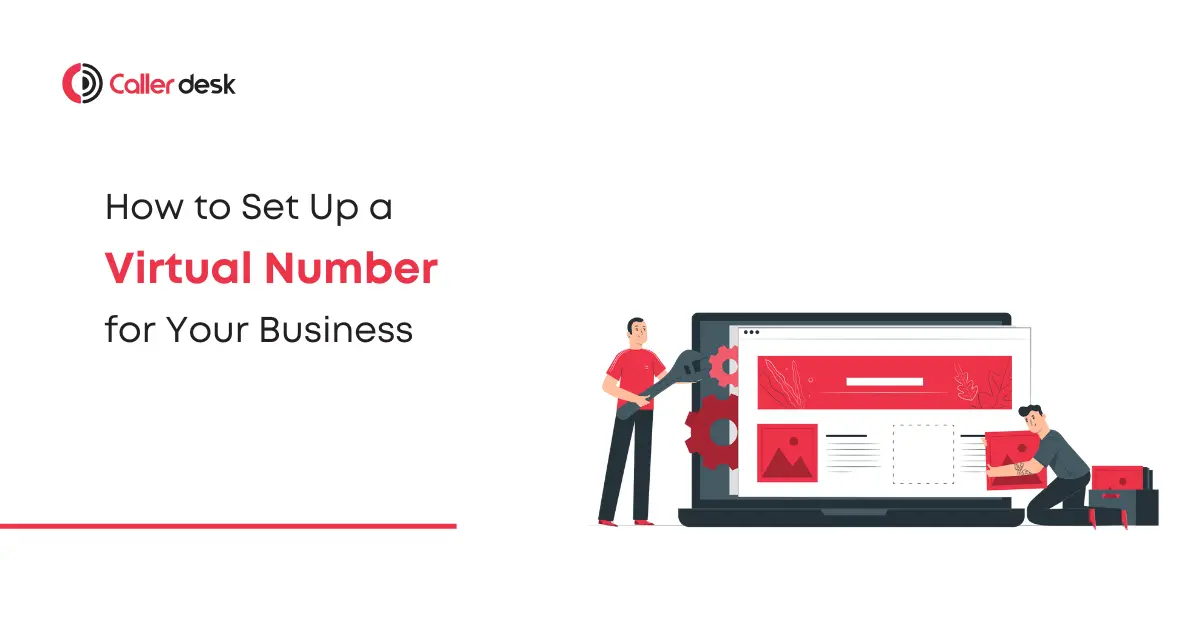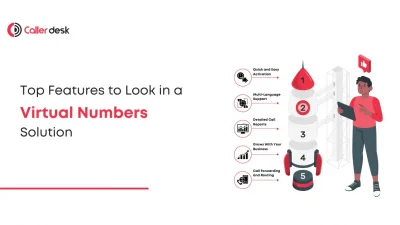If you’re running a growing business, you know the challenge of balancing customer inquiries with your daily tasks. Calls come in at all hours, and managing them on your personal phone can feel chaotic—not to mention unprofessional.
That’s where a virtual number comes in. This game-changing tool helps you separate work from personal life, project a polished business image, and streamline communication. Whether you’re a solopreneur or managing a growing team, virtual numbers let you handle calls like a pro while scaling effortlessly.
This guide breaks down the process of setting up a virtual number into six simple steps. By the end, you’ll have a clear roadmap to transform how you handle calls, improve customer satisfaction, and give your business the professional edge it deserves.
What Is a Virtual Phone Number?
A virtual phone number is a cloud-based number that isn’t tied to a specific phone or location. Instead, it uses VoIP (Voice over Internet Protocol) technology to forward calls to your preferred devices, whether it’s a mobile phone, landline, or computer.
Key Features of Virtual Numbers:
- Device Independence: Take calls on any device, anytime.
- Scalability: Add new numbers and features as your business grows.
- Global Connectivity: Connect with customers worldwide using local or international numbers.
Why Your Business Needs a Virtual Number:
- Privacy: Keep your personal phone number separate.
- Professionalism: Project a polished image with features like custom greetings and call routing.
- Efficiency: Route calls to the right team or device, ensuring no inquiry goes unanswered.
Now, let’s dive into the detailed steps to set up a virtual number.
Step 1: Choose the Right Provider
The first and most important step is selecting a reliable virtual number provider. The provider you choose will determine the features, flexibility, and scalability of your system.
Top Virtual Number Providers:
- CallerDesk:
- Designed for businesses of all sizes, offering features like call analytics, IVR menus, and cost-effective pricing.
- Ideal for companies needing advanced call management.
- Google Voice:
- Free for basic use, making it a great choice for small businesses or freelancers.
- Grasshopper:
- Offers features like voicemail transcription, call forwarding, and custom greetings.
- RingCentral:
- Perfect for businesses needing integrations with CRM tools, video conferencing, and team messaging.
- Twilio:
- Best for developers who want a customizable solution with APIs for tailored communication setups.
How to Choose the Right Provider:
- Evaluate Features: Look for call forwarding, voicemail, and analytics.
- Consider Scalability: Can the provider grow with your business?
- Check Pricing: Ensure the plan fits your budget and includes the features you need.
- Read Reviews: Learn from other businesses’ experiences with the provider.
Step 2: Select the Right Type of Virtual Number
Once you’ve chosen a provider, the next step is deciding on the type of number that aligns with your business needs.
Types of Virtual Numbers:
- Toll-Free Numbers:
- Starts with prefixes like 800, 888, or 877.
- Customers can call you without incurring charges, making it great for customer service and nationwide reach.
- Local Numbers:
- Comes with area codes specific to regions (e.g., +91-80 for Bengaluru).
- Perfect for businesses aiming to establish a regional presence and build trust with local customers.
- International Numbers:
- Numbers tailored for specific countries (e.g., +1 for the USA).
- Ideal for companies expanding into global markets, offering customers a familiar point of contact.
How to Choose the Right Number:
- If you’re targeting local customers, choose a local number.
- For a nationwide professional image, opt for a toll-free number.
- Expanding globally? An international number can enhance credibility and accessibility.
Step 3: Set Up Call Forwarding
Call forwarding is a crucial feature that allows calls made to your virtual number to be routed to the right device or team member.
Forwarding Options:
- Forward to Mobile Phones:
- Best for on-the-go teams or remote workers.
- Example: Route customer calls to your sales representative’s mobile phone.
- Forward to Landlines:
- Ideal for office-based operations where a fixed line is the primary communication tool.
- Forward to VoIP Phones:
- For businesses already using internet-based communication tools.
Advanced Call Routing Options:
- Sequential Forwarding: Forward calls to multiple devices in a specific order until someone answers.
- Simultaneous Forwarding: Ring multiple devices at once, ensuring faster response times.
Step 4: Customize Voicemail and Greetings
Your voicemail and greetings are an extension of your brand. Customizing these elements helps create a professional and consistent customer experience.
Tips for Customizing Greetings:
- Professional Greeting:
- Example: “Thank you for calling [Your Business Name]. Please hold while we connect you to the next available representative.”
- After-Hours Message:
- Example: “You’ve reached us outside business hours. Please leave a message, and we’ll get back to you soon.”
- Personalized Greetings:
- Add a friendly touch, such as “Hi! Thanks for calling [Business Name]. We’re excited to help you!”
Voicemail Features to Look For:
- Voicemail Transcription: Converts voice messages to text for easier review.
- Voicemail Forwarding: Send messages directly to your email for quick access.
Step 5: Test Your Virtual Number
Testing ensures that your virtual number is fully functional and provides a seamless experience for customers.
What to Test:
- Call Forwarding: Ensure calls are routed correctly and promptly.
- Voicemail Setup: Verify that messages are recorded and accessible.
- Call Quality: Test calls for clarity and stability across different devices and networks.
- Device Compatibility: Simulate calls from various devices, including mobile phones, landlines, and VoIP systems.
Step 6: Start Using Your Virtual Number
Once everything is set up and tested, it’s time to put your virtual number to work!
How to Maximize Your Virtual Number:
- Use it for customer service: Route calls to the right departments for faster resolutions.
- Leverage it in marketing campaigns: Include the number in ads, emails, and social media.
- Monitor call data with analytics tools to measure performance and improve strategies.
Key Benefits of Virtual Numbers for Businesses
1. Professional Image
Virtual numbers like toll-free or local numbers help businesses project reliability and trust. Toll-free numbers make your business accessible without call charges, while local numbers establish a presence in specific regions.
2. Privacy Protection
Keep personal numbers private while maintaining availability. Virtual numbers separate personal and professional calls, protecting data and ensuring privacy.
3. Seamless Scalability
Add numbers or expand to new regions as your business grows, without needing additional hardware. Assign numbers to departments, campaigns, or regions to streamline operations.
4. Flexibility and Mobility
Handle calls from anywhere using any device, enabling remote work and uninterrupted communication. Virtual numbers integrate with cloud systems for seamless operations.
5. Cost Efficiency
Save on telecom expenses with affordable, cloud-based plans. Avoid physical phone lines and get advanced features like call routing, analytics, and IVR at lower costs.
Conclusion
Setting up a virtual phone number is a game-changer for businesses looking to improve communication, enhance customer experience, and maintain professionalism. With the right provider, number type, and setup, you can create a seamless system that adapts to your needs.
Take the first step today. Whether you’re a small business or a growing enterprise, a virtual number will help you connect better with your customers and keep your operations efficient.
Ready to get started? Contact CallerDesk for tailored virtual number solutions that fit your business perfectly.



